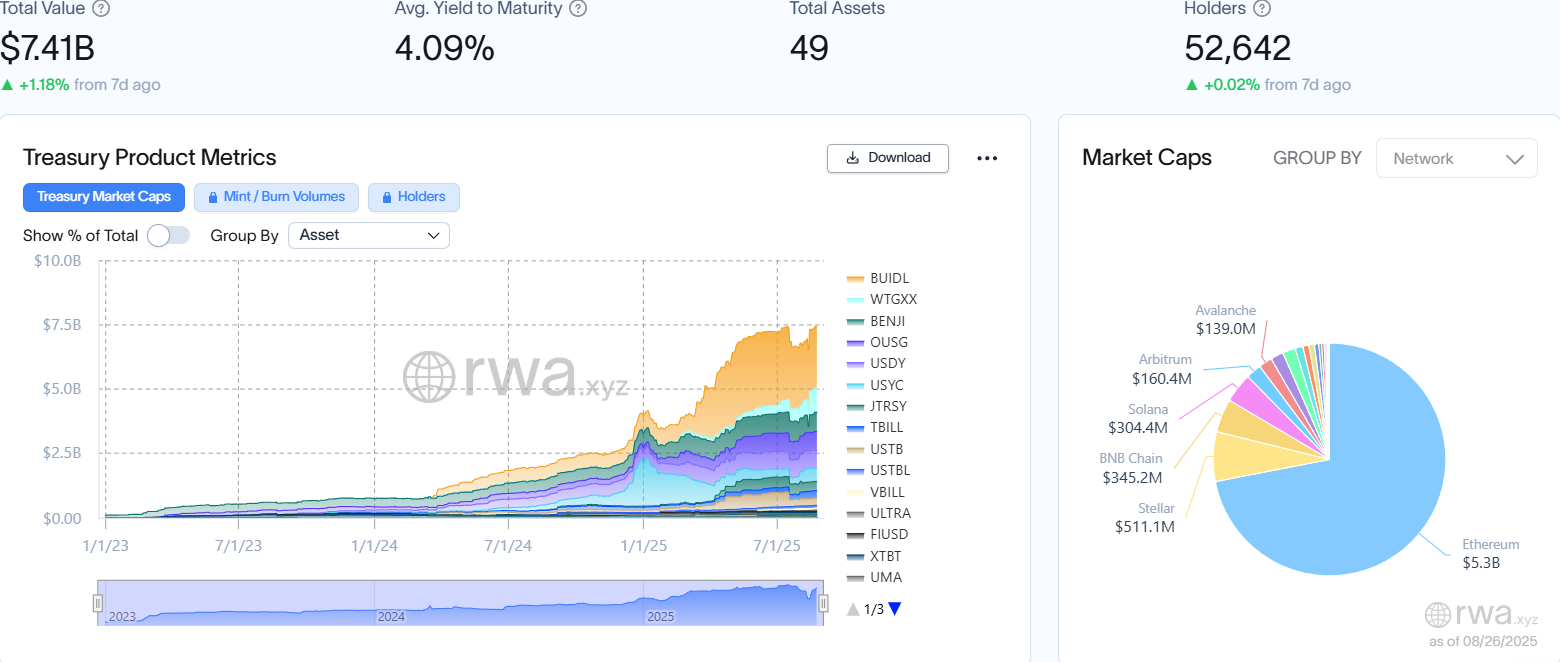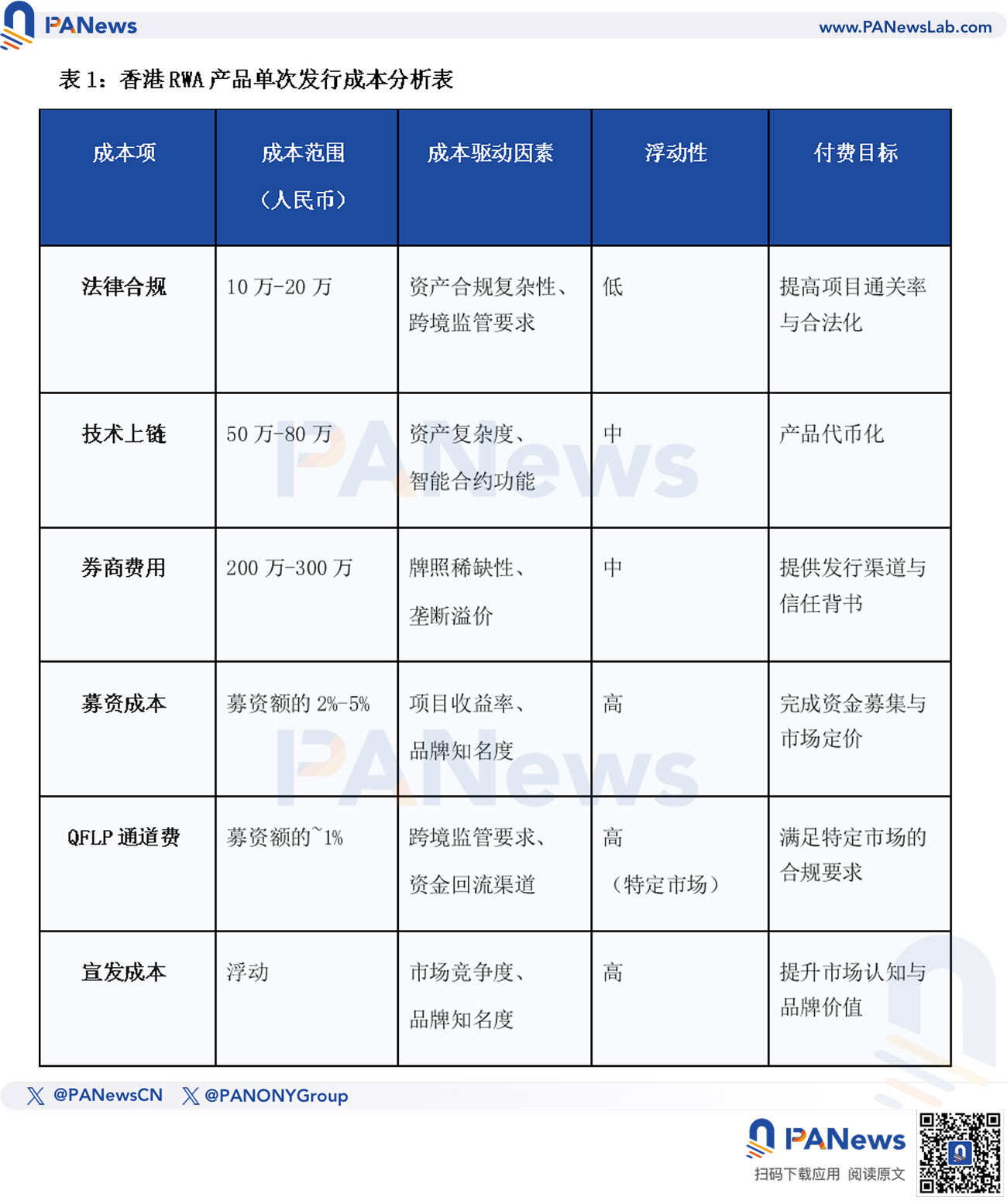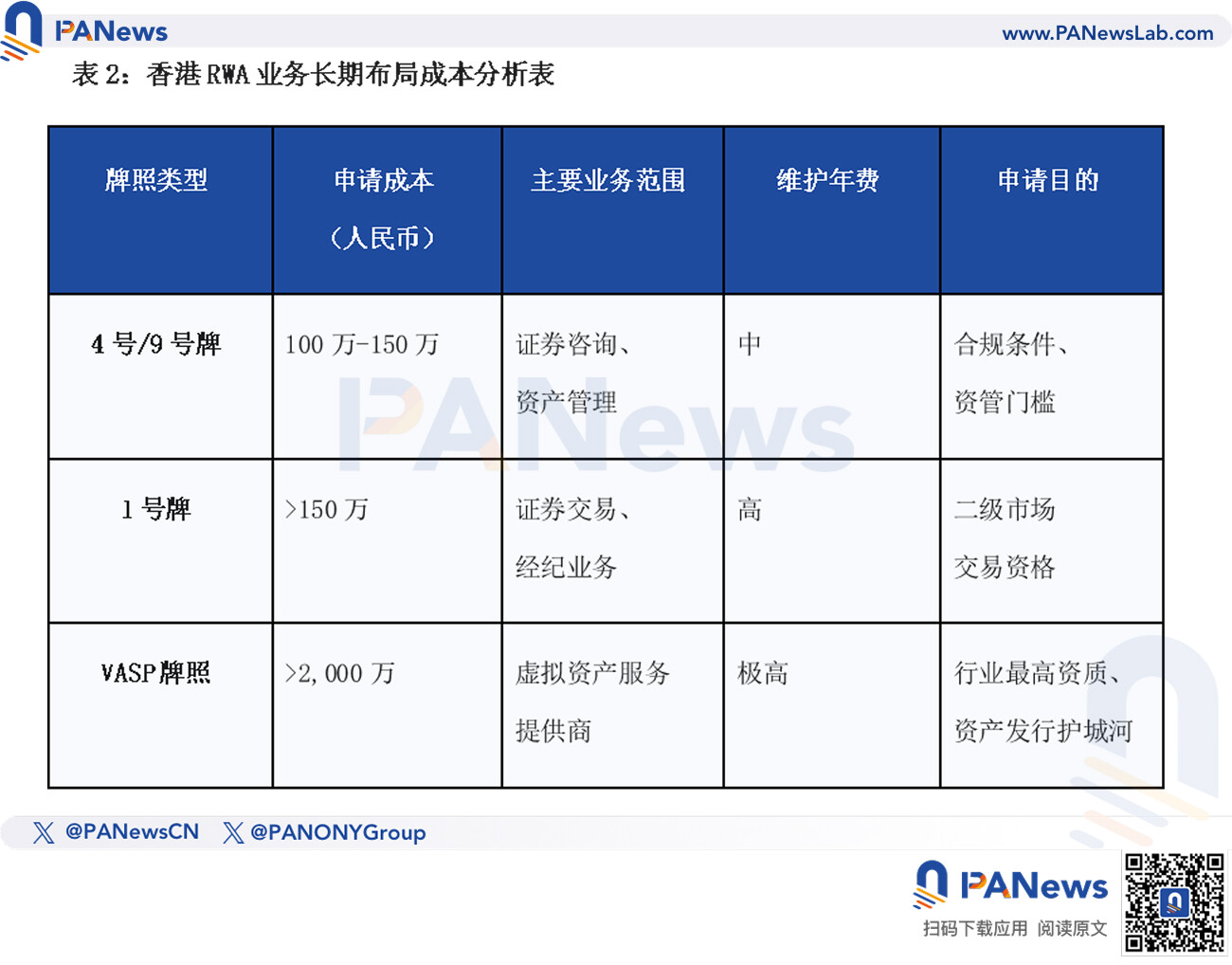Original Author: J.A.E, PANews
Real estate, new energy, innovative drugs, transportation… The RWA (Real-World Assets) related announcements from Hong Kong listed companies in various sectors are like pebbles dropping into a pool, stirring the stock market and tugging at investors' nerves. Many listed companies are hastening to learn and explore RWA or digital asset businesses, envious of the soaring stock prices of the pioneers.
RWA is widely promoted for its various advantages, such as improving asset liquidity, lowering investment entry barriers, and simplifying transaction processes. However, the underlying complexities and high costs associated with its implementation are rarely known. In reality, RWA projects are not simply about putting assets on the blockchain through technology; they are a complex practice that seeks to balance business models, legal compliance, and technological innovation.
What types of assets are suitable for tokenization?
The core definition of RWA is the tokenization of tangible and intangible assets from the real world, such as real estate, private equity, notes, and bonds, through blockchain technology, allowing them to circulate, trade, and be applied in the crypto market.
However, RWA tokenization is not a universal choice for all assets; the quality and category of the underlying assets are crucial. An RWA asset suitable for tokenization must possess certain intrinsic value to attract significant on-chain liquidity. During an RWA offline event hosted by PANews, several guests discussed what types of assets are suitable for RWA.
First, standardized and highly liquid assets are the primary conditions for the successful issuance of RWA products. Mao Jiehao, a senior lawyer at Shanghai Mankun Law Firm, pointed out that from the perspective of compliance and smooth issuance, financialized products like money market funds and U.S. Treasury bonds are the ideal path for RWA tokenization.

Second, the yield of RWA products must be sufficiently competitive. Zhang Yuanjie, co-founder and COO of Conflux, highlighted through the explanation of the basis hedging strategy of the Ethena protocol that the yield of RWA assets not only needs to compete with the risk-free rates in the TradFi market (such as U.S. Treasury yields) but also must be capable of contending with the yields of DeFi protocols. To attract more funds, many RWA products adopt a "dual yield" model: the yield from the underlying assets is supplemented with additional token incentives, providing investors with higher potential returns.
On the other hand, some non-standard assets, while narratively appealing, face numerous challenges in practical implementation. In Zhang Yuanjie's view, some photovoltaic battery swap projects on the market, although excellent cases of non-standard asset tokenization linked to the real economy, suffer from poor scalability and liquidity. Such "loud thunder but little rain" projects fail to meet the market's core demands for replicability, scalability, and high liquidity, and thus should not become mainstream RWA assets.
The value proposition of RWA has unique market attributes. Zheng Lijiang, research manager at Shanghai Wanxiang Blockchain Co., believes that the core advantages of RWA lie in 1) global price discovery and round-the-clock liquidity: the trading of traditional financial assets is strictly limited by time and geography, while RWA can achieve seamless trading and global pricing through blockchain, significantly enhancing the timeliness and liquidity of asset transactions; 2) combinability and universality: the key advantage of RWA lies in its "programmability." If an asset is on-chain, it can serve as a "Lego block" in the DeFi ecosystem, integrating or combining with other protocols to create entirely new financial products and application scenarios. Additionally, it possesses "universality," theoretically lowering entry barriers significantly, allowing any investor to participate in asset issuance and investment, thereby broadening investment boundaries; 3) issuance efficiency: compared to conventional asset securitization tools (like ABS or REITs), RWA has significant advantages in issuance cycles and certain costs, such as omitting many cumbersome intermediaries and paperwork, greatly improving asset issuance efficiency.
However, behind the popularity of RWA narratives, there are also some common industry misconceptions, such as 1) everything can be put on-chain, easily securing financing: this is the most common misunderstanding in the industry; putting a type of asset on-chain does not automatically mean it can secure funding. Whether a project or asset can obtain financing fundamentally depends on its intrinsic value, yield, and risk-return ratio. Blockchain merely provides a more efficient new platform, but the underlying logic of financing remains unchanged; 2) asset tokenization is equivalent to asset securitization: asset securitization addresses the issue of ownership "fractionalization," and there were already viable solutions before RWA emerged (like REITs). The core functions brought by tokenization are not limited to ownership division but include advantages such as global price discovery, combinability, and universality that traditional securitization tools cannot provide.
In summary, RWA's positioning is more focused on being a "layer of enhancement" rather than a "substitute." It does not replace the rigorous due diligence obligations and asset securitization models in TradFi but empowers assets with the technological advantages of blockchain, allowing them to circulate and appreciate in a globalized, programmable crypto market, thereby creating richer liquidity and application scenarios for assets.
How high are the costs of an RWA project?
Since RWA projects involve different business model choices before initiation, they will also lead to different cost structures. Roy, founder of District Consulting, revealed in an interview with PANews that, taking Hong Kong as an example, RWA projects can be divided into two models: one is the single issuance of RWA products, and the other is the long-term layout of RWA business.
The single issuance of RWA products refers to the issuer completing the tokenization and fundraising of a specific product only once, with costs typically ranging from 3 million to 6 million RMB, with high expenses composed of several key components, where brokerage fees dominate.
Legal compliance is the "amulet" for RWA product issuance, with costs ranging from 100,000 to 200,000 RMB, used to establish an SPV (Special Purpose Vehicle) structure and ensure it meets cross-border compliance requirements, especially the compatibility of legal systems between the mainland and Hong Kong. Establishing an SPV is a core step in defining legal ownership and isolating asset risks, ensuring that the rights represented by the tokens are traceable and verifiable. Cross-border compliance is more complex, needing to satisfy both mainland legal requirements and Hong Kong's Securities and Futures Ordinance (SFO), particularly regarding fund repatriation and cross-border asset transactions to avoid potential legal risks. Legal compliance costs are an essential expenditure for any regulated RWA project.
The relatively fixed range of legal compliance costs indicates that the cost of building a basic compliance framework is relatively controllable, but the risks of non-compliance arising from improper handling can be immeasurable. If a project cannot operate effectively within the legal framework, all additional investments in technology and fundraising will be wasted. Therefore, legal compliance costs stand at a strategic high ground among all cost items, determining whether the project can successfully "clear customs" and don the cloak of "legalization."
Technological on-chain integration is the core engine of RWA tokenization, with costs around 500,000 to 800,000 RMB, used for public chain integration and asset registration, covering the development of smart contracts, security audits, and the synchronization of on-chain data with off-chain asset information. The complexity of the assets is the core variable affecting costs. The technical implementation cost of single ownership assets (like bonds, real estate, etc.) is relatively low; however, assets with multi-layered yield distribution mechanisms (like private equity funds) require the development of more complex smart contracts and integration of on-chain oracles, significantly increasing costs.
Technical selection is a key lever for controlling RWA project costs and also determines the volatility of development costs. The choice of public chain and the integration of zero-knowledge proofs, among other technical routes, will directly impact the final costs. Projects with strong development capabilities and the ability to issue complex assets typically have higher technical investments than the market average, but this also grants them the ability to design more distinctive and higher-dimensional RWA products, thus creating a differentiated advantage in competition.
Brokerage channels serve as the "credit endorsement" for RWA projects, with expenditures being the highest cost item for single issuance of RWA products, reaching up to 2 million to 3 million RMB. This fee is charged by licensed Hong Kong brokerages as a comprehensive pricing for their services, including compliance control, due diligence, issuance channels, and product underwriting. Brokers act as a bridge connecting TradFi and the crypto market, and their licenses, reputation, and professional services constitute an expensive "trust premium."
The deep logic behind the high brokerage fees is closely related to the difficulty and scarcity of obtaining licenses in the Hong Kong financial market. The high initial investment and ongoing maintenance costs for obtaining licenses have led a few licensed institutions to control key issuance channels, forming a de facto monopoly. The high issuance channel fees are the primary means for licensed institutions to recover their substantial sunk costs. Therefore, brokerage fees are not only the most visible entry barrier for RWA product issuance but also fuel the evolution of the RWA market towards "institutionalization," filtering out project parties with rigorous business plans and sufficient capital strength, turning RWA into a type of organized and capital-supported "product."
Fundraising costs are a function of yield and brand recognition, approximately 2% to 5% of the fundraising amount, with fees highly dependent on the intrinsic value and market credit of the RWA product. The product yield is a direct reflection of its intrinsic value; the higher the yield, the lower the difficulty and cost of fundraising. Brand recognition is the market's valuation of its credit; issuers with high brand recognition can leverage their brand effect to reduce fundraising costs. These two factors jointly determine the financing difficulty and costs of the product, indicating that the pricing logic of RWA products closely follows the basic rules of the TradFi market.
QFLP (Qualified Foreign Limited Partner) channel fees are specific costs for cross-border capital flows, approximately 1% of the fundraising amount, paid to comply with specific regulatory requirements and complete the compliant cross-border repatriation of mainland funds. Their existence clarifies one point: if RWA products wish to attract qualified investors from the mainland, they must incur additional costs for specific compliance requirements and fund repatriation channels. Issuers must consider the channel fees of their target market when formulating fundraising strategies.
Marketing costs are a dynamic variable in market pricing; currently, the marketing costs for RWA are in a "floating" state. As the RWA narrative is on the rise, media has a spontaneous enthusiasm for reporting on emerging sectors, so initial marketing efforts are largely self-propagated by the media, allowing issuers to gain attention at a lower cost. However, this low-cost model is not sustainable. As the RWA market continues to develop and competition intensifies, when the market transitions from the "early" stage to the "mainstream" stage, specialized services such as public relations, marketing, brand building, and advertising will become essential, at which point marketing costs will significantly rise.

For project parties planning to deeply cultivate the RWA field in Hong Kong, the cost of single product issuance is just the tip of the iceberg. A scaled business layout and compliance maintenance will pose greater financial challenges; although their fixed costs are high, they will also form competitive barriers and "moats" for the project parties.
The initial investment for preparing RWA business in Hong Kong mainly includes two aspects. First is the establishment of an offshore structure, with costs around 300,000 RMB, which is a necessary step for expanding international financial business.
The second aspect is the more critical and costly license application, where different types of licenses will determine the breadth and depth of the business. The application cost for License 1 exceeds 1.5 million RMB, allowing direct trading of securities, which is the basis for the circulation of tokens in the secondary market; the application costs for Licenses 4 and 9 range from 1 million to 1.5 million RMB, focusing on providing securities consulting and asset management services; the VASP (Virtual Asset Service Provider) license is the highest level of license for token issuance and trading, with particularly high application costs, constituting a significant entry barrier in the RWA field. HashKey once spent tens of millions to apply for this license. The substantial sunk costs of applying for the VASP license directly divide market participants into two categories: a few licensed entities with sufficient capital strength as "business parties" and the majority relying on channels, needing to pay expensive fees for each issuance as "product parties."
Operating RWA business requires long-term fixed cost investments, with the core of ongoing capital expenditure being "people," specifically professional audit, compliance, and legal personnel. Labor costs are key to ensuring the validity of licenses and maintaining legal operations, with cost items mainly including annual audit/legal fees and license maintenance fees. For annual audit/legal fees, the starting price in the mainland is about 100,000 RMB, while in Hong Kong, as an international financial center, professional service fees will be higher; regarding license maintenance fees, there are significant differences in maintenance costs for different licenses. Licenses 4 and 9 have lower maintenance costs, but License 1 and the VASP license require dedicated internal compliance teams and strict annual audits, resulting in their maintenance costs being significantly higher than those of ordinary licenses.

The cost structure of RWA projects is gradually showing an "oligopolistic" trend, especially with the high costs and capital requirements for license applications, effectively filtering out project parties with strong capital strength.
What are the key constraints faced by RWA?
In addition to cost barriers, RWA projects also face structural bottlenecks at the ecosystem level.
First is the challenge of technological infrastructure. Cheng Yuan, an anti-money laundering product expert at Certik, pointed out that blockchain infrastructures such as oracles and cross-chain protocols are still in their infancy and pose single-point risks. For example, the current oracle market is dominated by Chainlink; if it encounters issues, it could lead to systemic risks in the entire DeFi ecosystem, with consequences that are evident for RWA, which requires synchronization of off-chain data.
Second is the vacuum of composite talent. Zhang Yuanjie mentioned that there is currently a shortage of asset managers who are proficient in both TradFi and DeFi. The lack of such talent has led to many RWA projects struggling to effectively integrate off-chain assets with on-chain protocols, thereby failing to fully realize the value proposition of RWA.
Finally, there is a lack of on-chain distribution channels. Zhang Yuanjie pointed out that RWA currently relies increasingly on distribution through Ethereum ecosystem DeFi protocols. Local on-chain distribution channels in the Asia-Pacific region are severely lacking, meaning that even if there are quality assets in the region, it is difficult to establish a complete liquidity cycle locally, thus limiting the fundraising and circulation of local assets. As the local on-chain ecosystem in the Asia-Pacific is not yet mature, RWA products in Hong Kong have all chosen to distribute through off-chain brokerage channels rather than DeFi protocols.
On-chain distribution channels have advantages in terms of cost, globalization, and combinability, but they struggle to meet regulatory requirements; conversely, off-chain brokerage channels excel in trust, localization, and high compliance, but their costs are extremely high. Both types of distribution channels have their own pros and cons, and specifically for the Hong Kong region, off-chain brokerage channel distribution may be a more suitable solution.
Thus, it is evident that the large-scale implementation of RWA is not merely a localized issue of regulation or cost, but a systemic challenge composed of technology, talent, and channels.
免责声明:本文章仅代表作者个人观点,不代表本平台的立场和观点。本文章仅供信息分享,不构成对任何人的任何投资建议。用户与作者之间的任何争议,与本平台无关。如网页中刊载的文章或图片涉及侵权,请提供相关的权利证明和身份证明发送邮件到support@aicoin.com,本平台相关工作人员将会进行核查。




